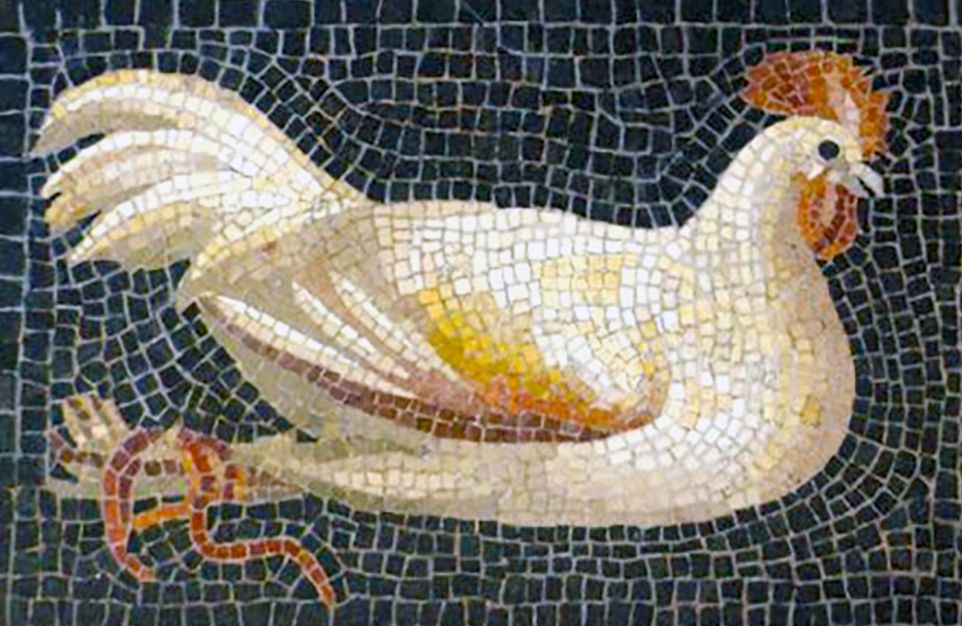
 Click on the image, above to submit to Pinterest.
Click on the image, above to submit to Pinterest.
Pullum Laseratum (Chicken with Laser)
Pullum Laseratum (Chicken with Laser) is a traditional Ancient Roman recipe for a classic dish of chicken cooked in a clay casserole with pepper, lovage, asafoetida (laser), liquamen, stock and wine. The full recipe is presented here and I hope you enjoy this classic Ancient Roman version of: Chicken with Laser (Pullum Laseratum).
prep time
20 minutes
cook time
100 minutes
Total Time:
120 minutes
Serves:
4
Rating: 
Tags : Spice RecipesChicken RecipesFowl RecipesAncient Roman Recipes
Original Recipe
Pullum laseratum: pullum aperies a navi, lavabis, ornabis et cumanam ponis. teres piper, ligusticum, laser vivum, suffundis liquamen, vino et liquamine temperabis, et mittis pullum. coctus si fuerit, piper aspersum inferes.
Translation
Chicken with Laser: Open the chicken by the rear. Wash and dress the bird then place in an earthenware pot. Pound pepper, lovage and fresh laser. Moisten with liquamen and blend with wine and stock. Pour over the chicken [and cook]. When done, sprinkle with pepper and serve.
Modern Redaction
Ingredients:
1 prepared chicken (about 1.8kg)
1/2 tsp freshly-ground
black pepper
1/2 tsp
lovage seeds (or celery seeds)
1/8 tsp
asafoetida
2 tsp liquamen (fish sauce)
250ml chicken stock
120ml white wine
freshly-ground white pepper, to garnish
Method:
Wash, trim and truss the bird then place in an earthenware casserole dish.
In the meantime, pound together the black pepper, lovage (or celery) seeds and asafoetida in a mortar. Work in the fish sauce then mix with the stock and wine. Pour this sauce over the chicken then place a lid on the casserole. Transfer to an oven pre-heated to 180°C and cook for about 90 minutes, basting occasionally, or until the chicken is cooked through and tender.
Remove from the casserole and allow to rest, covered with foil, for 10 minutes. Sprinkle with white pepper and serve.
Find more recipes from Apicius' De Re Coquinaria along with information on Apicius and his cookbook, all part of this site's Ancient Roman recipes collection.

 Click on the image, above to submit to Pinterest.
Click on the image, above to submit to Pinterest.